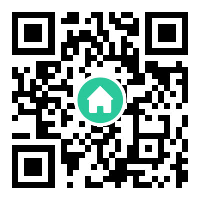Telegram mini apps have emerged as a revolutionary tool in the realm of instant messaging, transforming how users interact with services directly within the Telegram ecosystem. By leveraging the platform’s vast user base and seamless integration capabilities, these lightweight applications are redefining convenience and accessibility. From gaming and e-commerce to productivity tools, Telegram mini apps eliminate the need for external downloads, enabling businesses and developers to reach audiences in a frictionless manner. This article explores the rise, features, and potential of Telegram mini apps in shaping the future of in-chat experiences.
What Are Telegram Mini Apps?
Telegram mini apps are web-based applications that operate entirely within the Telegram interface. Built using HTML, CSS, and JavaScript, these apps run inside Telegram’s native apps—whether on mobile or desktop—without requiring users to install additional software. They are typically launched via Telegram bots, which act as gateways to interactive interfaces. For example, a restaurant might create a mini app for ordering food, while a fitness brand could design a workout tracker. By embedding functionality into chats, Telegram mini apps turn conversations into actionable spaces, blending communication with utility.
Key Advantages of Telegram Mini Apps
The popularity of Telegram mini apps stems from their unique benefits. First, they eliminate platform fragmentation. Unlike traditional apps that require separate development for iOS and Android, mini apps work across all devices supported by Telegram. Second, they prioritize speed and simplicity. Users can access services in seconds, bypassing app store approvals or installation steps. Third, Telegram’s built-in authorization system allows seamless user authentication, reducing friction during onboarding. Additionally, mini apps support cryptocurrency payments via Telegram’s Wallet bot, opening doors for decentralized finance (DeFi) integrations. These features make them ideal for businesses aiming to engage users in a fast-paced digital environment.
Use Cases Driving Adoption
Telegram mini apps are already powering diverse applications. In e-commerce, brands like Zara and Booking.com have experimented with mini apps to showcase products and process bookings within chats. Gaming is another booming sector—developers are creating HTML5-based games that users can play with friends directly in Telegram groups. Educational platforms use mini apps for quizzes and language lessons, while news outlets deliver personalized content through interactive interfaces. Even healthcare providers are adopting mini apps for appointment scheduling and teleconsultations. This versatility demonstrates how Telegram mini apps are bridging gaps between industries and consumers.
Developer Opportunities and Ecosystem Growth
For developers, Telegram mini apps offer a low-barrier entry to reach over 900 million monthly active Telegram users. The platform provides extensive documentation, JavaScript libraries, and testing tools to streamline app creation. Monetization models include in-app purchases, subscriptions, and ads, with Telegram taking no commission—a stark contrast to Apple’s 30% App Store fee. Furthermore, the open-source nature of Telegram’s ecosystem encourages innovation, allowing developers to integrate blockchain protocols or AI-driven features. As more businesses recognize the potential of in-chat experiences, demand for mini app developers is expected to surge, creating new career pathways in tech.
Challenges and Future Outlook
Despite their promise, Telegram mini apps face challenges. Limited discoverability remains an issue, as users must actively search for or receive bot links to access apps. Security concerns also arise, as malicious actors could exploit web-based interfaces. However, Telegram is addressing these hurdles by improving bot directories and enhancing encryption. Looking ahead, advancements in AI and augmented reality (AR) could enable richer mini app experiences—imagine virtual try-ons for fashion apps or AI tutors in education tools. As Telegram continues refining its platform, mini apps are poised to become a cornerstone of the metaverse, blurring the lines between messaging and immersive digital interaction.

In conclusion, Telegram mini apps represent a paradigm shift in how we conceptualize app ecosystems. By merging communication with functionality, they empower businesses, delight users, and redefine accessibility. As adoption grows, these mini apps will likely inspire similar innovations across other messaging platforms, cementing their role as a catalyst for the next wave of digital transformation.










